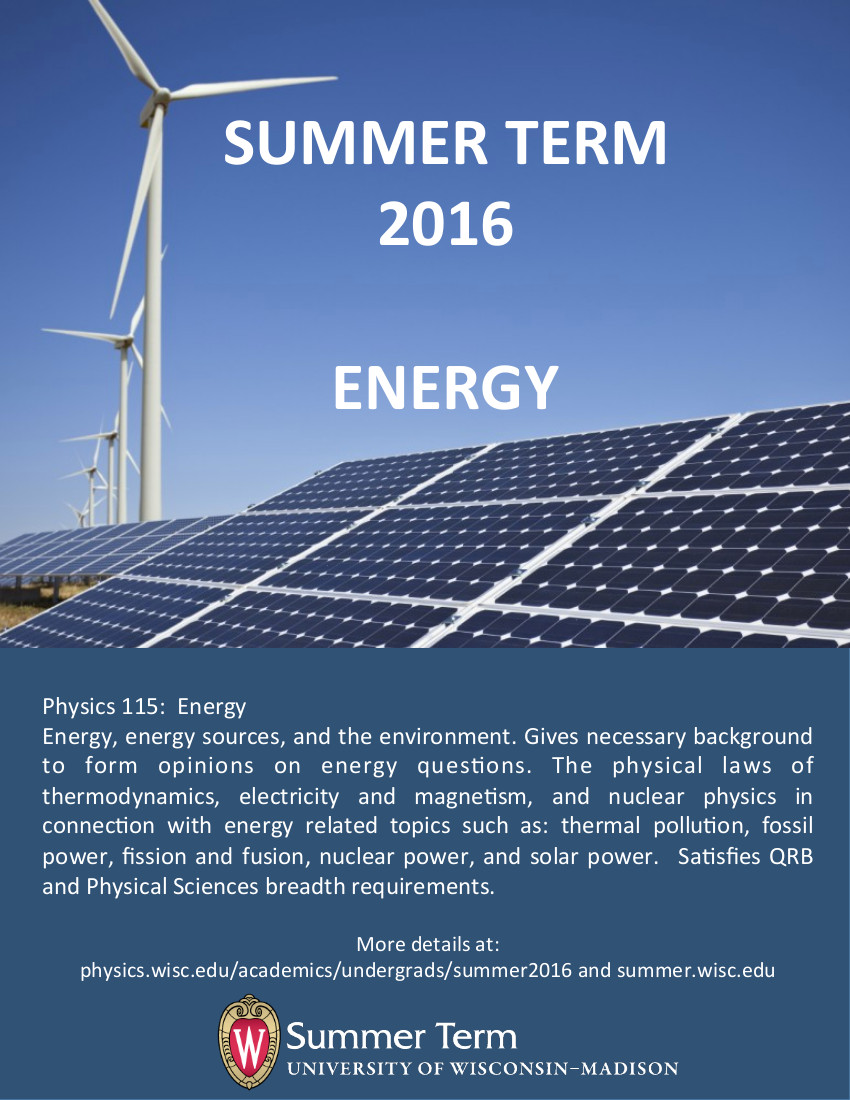Congrats to the 2019-20 Department of Physics Scholarship & Award Winners! Please join us in recognizing their achievements at a virual ceremony to be held via Blackboard Collaborate on Thursday, May 7, at 5pm CDT.
admin
2020 Commencement
Please join us for a live virtual Commencement ceremony for undergraduate Physics and AMEP majors and Physics PhDs. For more info and a list of graduates, please visit https://www.physics.wisc.edu/commencement-2020/
Flashback: 1978 Chamberlin and Sterling Courtyard/Camerini Decuplet – recognize your bike?
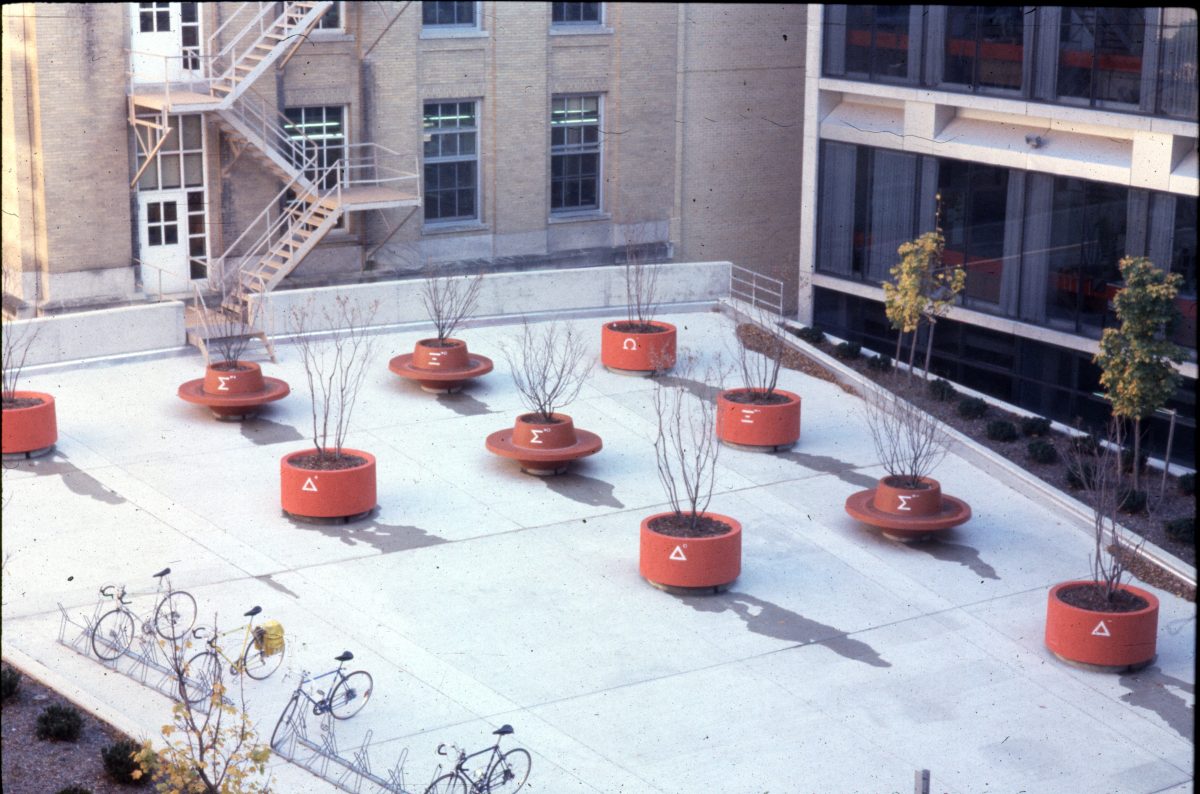
Summer 2019 Physics Courses
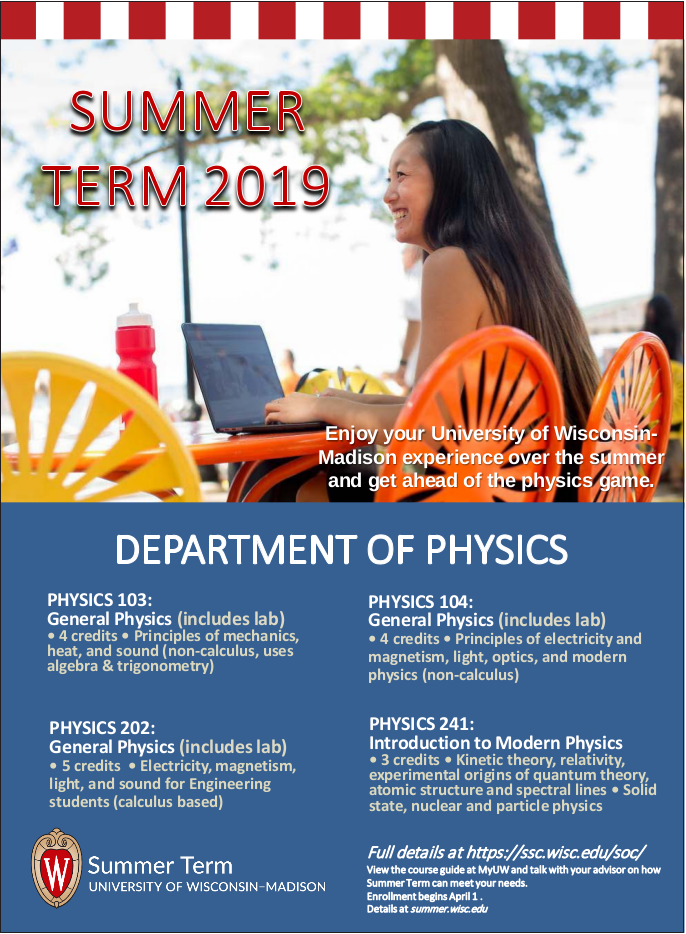
Student Job Opening within Lecture Demonstration
The Physics Department lecture demonstration office (one of the largest in the nation) is looking for a fun, energetic, and loyal student with that “creative edge”: someone with a background in the physical sciences or within physics itself, someone interested to learn more about physics, physics demonstrations, and audio/video equipment. Initially for 10 hours per week, with the possibility for more hours. Freshmen are welcome and encouraged to apply. Work-study are welcome to apply. Work trial period of one semester, with the possibility of continuation throughout the summer and into following year(s).
Job Requirements:
- Some general physics knowledge is a plus.
- Have a desire to learn more about physics and audio-visual equipment
- Must have a working knowledge of hand tools and/or willing to learn
- Be able to listen and follow instructions, but also present alternative solutions to problems.
- Be able to work both independently and as a team.
- Having the ablity to work during most of the summer months, big Plus!
- Having the ablity to work most Fridays from 3pm-4:30pm, big plus!
- Working knowledge of Arduino, Raspberry Pi, and other microcontrollers would be awesome.
- Able to lift and move equipment (50lbs)
Job Duties include, but are not limited to, the following:
- Assist in the digitally record our weekly departmental colloquia on Friday afternoons and other lectures, and digital editing.
- Assist with the physics museum, tours, and our annual physics demo shows.
- Assist with researching and archiving of lecture demonstration equipment, including making and repairing equipment, fixing cabinets, data entry, labeling, and much more.
- Assist with audio/video maintenance, including pulling wire, testing cables, making cable, installing equipment, labeling, and troubleshooting.
- Assist with various odd jobs, cleaning whiteboards, hanging things, fixing broken items, woodworking such as sanding, painting and varnishing.
Please submit to Steve Narf (Room 2237 Chamberlin) or Jim Reardon (Room 2320g Chamberlin):
- Cover letter expressing interest in this job
- Resume & Skills
- Reference –
M.S. in Physics-Quantum Computing
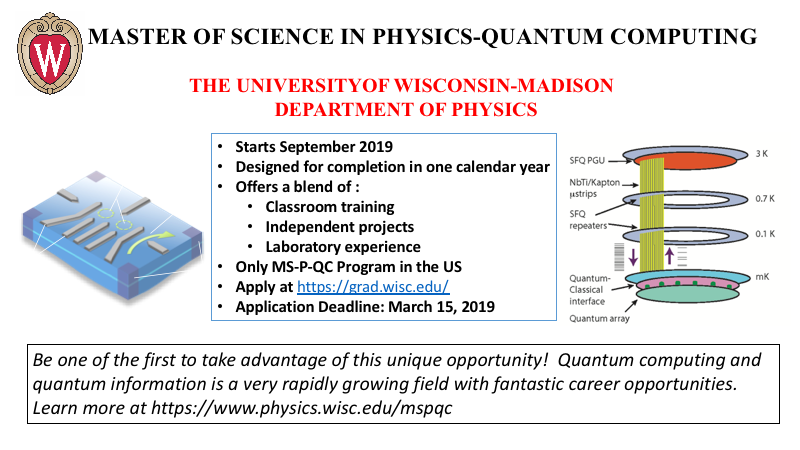
The Department of Physics is adding a new degree program focused on the growing field of quantum computing. The M.S. in Physics-Quantum Computing is a new Master’s program that will admit its first class in the Fall 2019 semester. The program will provide students with a thorough grounding in the new discipline of quantum information and quantum computing.
Prospective undergrads in physics meeting
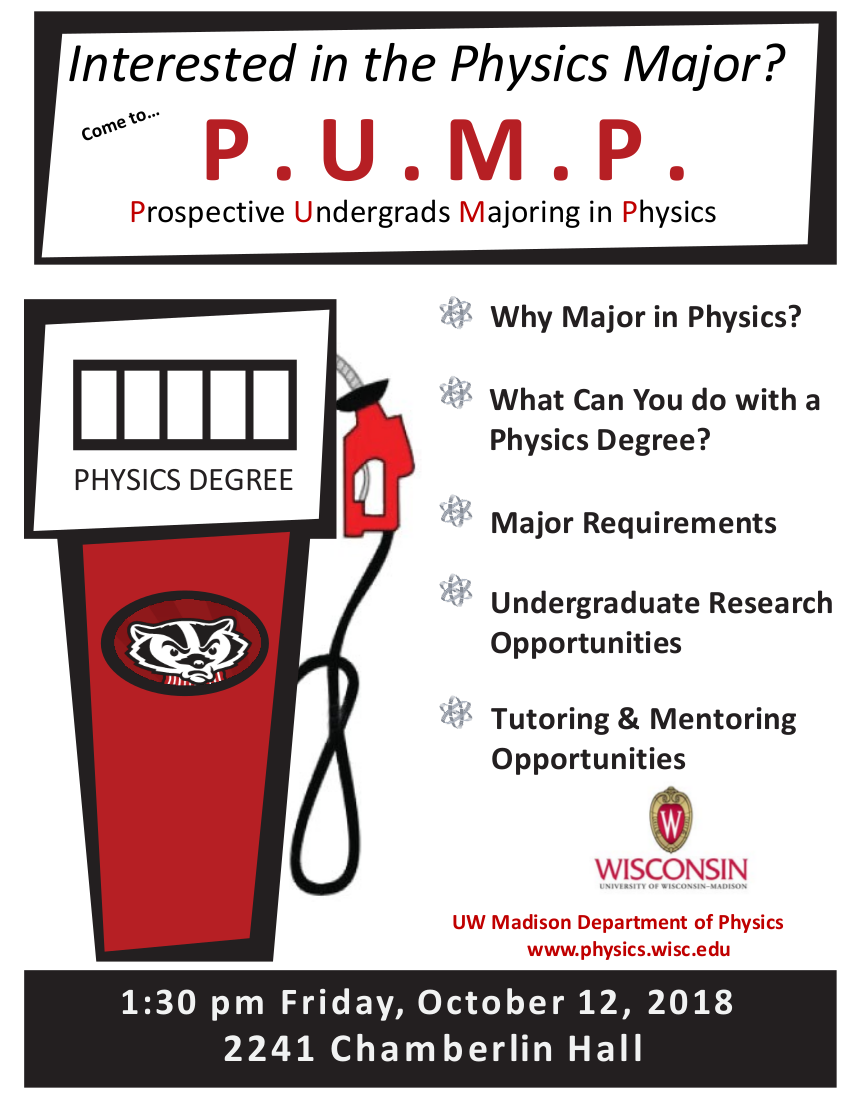
Interested in being a Physics Major? Come to an informational meeting!
Physics professor Stefan Westerhoff dies at 50
Stefan Westerhoff, a professor in the physics department at the University of Wisconsin-Madison, passed away on Sunday, August 5, 2018, after a long illness. He was 50.
Stefan was a leading physicist in the fields of cosmic ray physics and gamma ray astronomy and a faculty member at the Wisconsin IceCube Particle Astrophysics Center (WIPAC). He contributed to a suite of historic experiments concentrating on the search for the enigmatic sources of cosmic rays: the High-Energy-Gamma-Ray Astronomy (HEGRA) detector array in La Palma, Spain, the High Resolution Fly’s Eye (HiRes) detector in Utah, the Pierre Auger Observatory in Argentina, the Milagro telescope in New Mexico, and, in the past decade, the IceCube Neutrino Observatory, located at the South Pole and operated by UW-Madison, and the High Altitude Water Cherenkov (HAWC) Observatory near Puebla, Mexico.
Stefan started his career in particle physics, but he had the vision, many years ago, to move into particle astrophysics. At that time, few astronomers or physicists paid much attention to this struggling discipline, and he was one of the pioneers in the early and rapid expansion of this field in Germany.
Born on December 25, 1967, in Hagen (Germany), Stefan was a PhD student at the University of Wuppertal, where he graduated in 1996. He came to the US as a postdoctoral researcher at the University of California, Santa Cruz, which included a stint at Los Alamos National Laboratory in New Mexico. Following this, he was a faculty member at Columbia University from 2000 until 2007. He joined the faculty at UW-Madison in 2007, where he became a full professor in 2012.
Throughout his career, he was selected to serve on the main advisory committees covering particle physics as well as particle astrophysics, from the Subatomic Physics Evaluation Section (SAPES) of the Natural Sciences and Engineering Research Council (NSERC) of Canada, which he chaired in 2015, to the CERN Proton Synchrotron Committee and the advisory board of the Gran Sasso underground laboratory. He was elected a Fellow of the American Physical Society in 2013 and received a UW-Madison Vilas Associates Award in 2014.
Stefan also excelled as a teacher. During his time in Madison, he taught courses ranging from core physics requirements to acoustics for musicians. As a physics teacher, Stefan was brilliant and fair, challenging and clear, and he was consistently rated as easily the best physics professor you could ever have, to quote several of his students—many of whom would organize their schedules to take as many courses with him as they possibly could.
At UW-Madison, he was a respected and admired colleague, and especially recognized for the constructive and thoughtful input given to every task he undertook, including advising undergraduate students and serving on committees for new faculty searches and overseeing tenure appointments.
Stefan’s colleagues and friends are deeply saddened by his passing and will remember him for his sharp mind, a witty sense of humor, his comforting voice and presence, and an amiable, generous, and straightforward personality. His legacy as a mentor leaves behind a cohort of scientists, not only in the IceCube and HAWC collaborations but also in other astronomy and astrophysics communities he was once a member of.
Stefan’s passion for music was well known. He preferred the classics and, among them, the opera: Beethoven, Brahms, Mendelssohn, Wagner, and many others. Stefan also was an accomplished piano player, although most of his friends never heard him play—not even when they were visiting in a room dominated by a baby grand piano—perhaps from Stefan’s inclination to always devote his full attention to his friends.
When not talking about physics or music, he would also make references to movies. As with music, he was fond of the classics, mostly films released before 1940. Yet he sometimes surprised his friends with his knowledge of sitcoms, such as The Golden Girls or Seinfeld.
Stefan is survived by his parents, Christa and Bernd Westerhoff, who visited him a few times per year but found themselves very far from Madison when Stefan’s health suddenly declined. His family and friends want to express their gratitude to Michaela Schultheis, his doctor Alissa Weber and the SSM oncology team, and the many caring nurses and social workers at Agrace Hospice & Palliative Care.
A memorial service will be held on August 25 in Madison. It will be from 2:00 to 4:00 PM at the Alumni Lounge in the Pyle Center, 702 Langdon Street. Memorial donations can be made to Agrace Hospice & Palliative Care and/or to the Stefan Westerhoff fund at IceCube for a memorial exhibit on acoustics to be placed in Chamberlin Hall, home of UW-Madison’s Department of Physics. To donate to this fund, please use this link and write “IceCube Project” as “Fund name” and in the gift options section mention that you are making this gift in memory of Stefan Westerhoff.
Test image recorded with a prototype camera for the Cherenkov Telescope Array
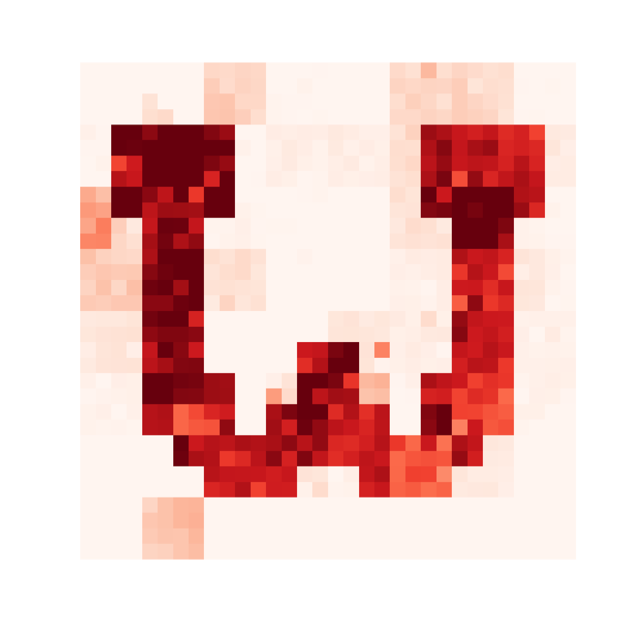
Each colored square corresponds to a pixel in the camera. The camera has 1024 pixels, each sensitive to single photons with time resolution of one billionth of a second. The full camera weighs several hundred pounds and measures five feet across. The image was created in the laboratory in Chamberlin Hall by flashing a light emitting diode at the camera, with pixels surrounding the W electrically suppressed by operating them at low bias voltage. The color scale indicates how many photons were detected in each pixel, with the darkest red pixels corresponding to the most light. The actual photons that were detected are blue. The pixels have not yet been calibrated, which is why some artifacts are visible. The camera will be installed on a prototype telescope at the Fred Lawrence Whipple Observatory, where it will detect flashes of light produced by very high energy gamma rays produced in astrophysical sources and colliding with Earth’s atmosphere. The prototype Schwarzschild Couder Telescope for the Cherenkov Telescope Array is supported by a Major Research Instrumentation grant from the National Science Foundation, award #1229792. Image credit: Colin Adams, Thomas Meures, Justin Vandenbroucke, Physics Department.
A short video describes the project and details UW’s involvement.
Energy – Physics 115 Summer 2016
